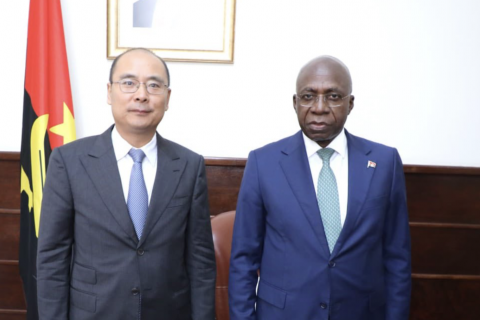"We anticipate that the Angolan economy will slow down in 2025 due to slower expansion in the oil and diamond sectors," wrote analysts from the African department of this British consultancy, in a comment sent to clients, and to which Lusa had access this Sunday.
Analysts believe that "high inflation and fiscal consolidation efforts will also limit the potential for higher GDP growth."
The latest data on Angola's economy shows growth of 4.4 percent last year, slightly below the forecast by Oxford Economics, which expected expansion of 4.5 percent, and comes days after the International Monetary Fund (IMF) completed an assessment of the country's economy under Article IV, the annual review of the economy of the Fund's member countries.
For the IMF, Angola faces the risk of seeing reforms compromised due to the approach of elections which, despite being only two years away, could harm fiscal consolidation efforts, which the Fund wants to see deepened.
The political struggle "could delay the implementation of key reforms, namely the end of fuel subsidies and the collection of internal revenues, while accelerating capital expenditure", says the report consulted by Lusa.
The IMF emphasizes that the fiscal situation has become more fragile, despite the decrease in public debt to 64 percent of GDP in 2024 and the 20 percent increase in oil revenues, due to the weak performance of non-oil revenues, capital expenditure slippages and a slower reform of fuel subsidies that led to an overall budget deficit of 1 percent of GDP (compared to a surplus of 1.3 percent of GDP in 2023).
The IMF says the Angolan economy recovered in 2024 to 3.8 percent (compared to 1 percent in 2023), diverging from figures from the National Institute of Statistics, which point to growth of 4.4 percent, but notes that dependence on oil continues to weigh on medium-term growth, taking into account the volatility of prices and production of this raw material, which represents 95 percent of exports and 60 percent of the country's tax revenues.
According to the Quick Information Sheet relating to the accounts for the fourth quarter, this positive variation is fundamentally attributed to the activities of Extraction of diamonds, metallic minerals and others (44.8 percent); Transportation and storage (10.4 percent); Fishing (12.2 percent); Electricity and water (6.5 percent); Commerce (4.6 percent); Other services (4.9 percent); Public Administration, Defense and Mandatory Social Security (4.3 percent), Agriculture (3.5 percent) and Oil extraction and refining (2.8 percent).







